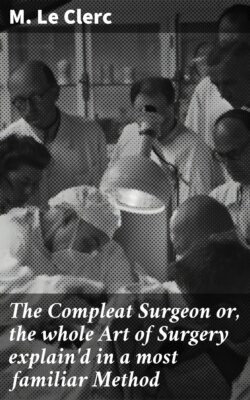Читать книгу The Compleat Surgeon or, the whole Art of Surgery explain'd in a most familiar Method - M. Le Clerc - Страница 21
На сайте Литреса книга снята с продажи.
C H A P. VI. Of Myology, or the Anatomy of the Muscles of a Humane Body.
ОглавлениеTable of Contents
What is a Muscle?
It is the principal Organ or Instrument of Motion; or it is a Portion of Flesh, wherein there are Veins, Arteries, Nerves, and Fibres, and which is cover'd with a Membrane.
How many parts are there in a Muscle?
Three, viz. the Head, the Belly, and the Tail: The Head is that part thro' which the Nerve enters; the Belly is the Body or Middle of the Muscle; and the Tail is the Extremity, where all the Fibres of the Muscle are terminated to make the Tendon or String which is fasten'd to the Part whereto it gives Motion.
Have all the Muscles their Fibres streight from the Head to the Tail?
No, some have them streight, others transverse, and others oblique or circular, according to the several Motions to which they are appropriated.
How many sorts of Muscles are there with respecting to their Action?
There are two different kinds, viz. the Antagonists and the Congenerate; the former are those that produce opposite Motions; as a Flexor and an Extensor, a Depressor and a Levator. The Congenerate are those that contribute to one and the same Action; as when there are two Flexors or two Extensors, and then one supplies the defect of the other; whereas when one of the Antagonist Muscles is cut, the other becomes useless, and void of Action.
How is the Action of a Muscle perform'd?
It is done by Contraction and Extension; the former causeth the Antagonist to swell, and the other compels it to stretch forth in length.
What is Aponeurosis?
It is the continuity of the Fibres of a Tendon which makes a Connexion that serves to strengthen the Muscle in its Motion.
